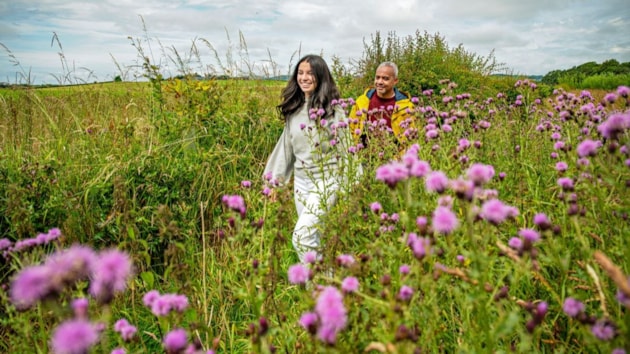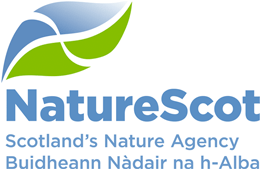12 February, 2025
NatureScot report shows a 2.9 percent long-term increase in how Scottish nature benefits people

A new study has shown that overall there have been increases in the ability of nature to contribute to our wellbeing, with marked improvements in agricultural habitats and the number of people spending time in nature, compared to 2000 levels.
The biennial Natural Capital Asset Index (NCAI) looks at how Scotland’s stock of habitats and ecosystems – the country’s natural capital - provides social, environmental and economic benefits to people, tracking annual changes in our ecosystems’ abilities to contribute to the health of Scotland’s food, water, air and communities. The Index reports on areas of improvement and deterioration, taking in a range of factors like aesthetic and cultural value, air purification, carbon sequestration and timber resources. In total, calculations track 38 indicators across seven Scottish habitat types: coastal; inland surface water; mires, bogs and fen; grasslands; heathland; woodland; agricultural and cultivated lands.
The 2025 NCAI shows that the ability of agricultural habitats to benefit people has been improving since 2018. This is largely due to efforts by farmers to reduce their impacts on the environment through participation in agri-environmental schemes and reducing the use of fertiliser and pesticides. These actions taken by farmers directly improve the ability of agricultural and cultivated habitats to deliver benefits to people across Scotland.
There has also been a dramatic improvement in the number of people who spend time in nature. In 2019, 56% of people recorded that they visit nature at least once a week. This spiked to 79% in 2020, likely due to influences of the pandemic. In the years following this spike, the percentage has only fallen slightly and was recorded at 70% in 2022, a huge improvement from pre-pandemic levels. This increase in the amount of time people are spending outdoors leads to a greater connection with nature and has positive impacts to people’s health and wellbeing in Scotland.
NatureScot Economist, Aidan Price said: “A nature-rich future, in which everyone is involved, will make us all happier, healthier, more well off and more equal in Scotland, but while the improvements in agricultural habitats, more time spent in nature, and the overall long-term improvement in the index are all great news, there is still a long way to go before we can reach the historically high levels of the 1950s for natural capital benefits in Scotland.
“The condition of freshwater, heathland and woodland habitats has declined below 2000 levels, and focussing efforts on restoring these could make a big difference to future NCAI results, as will taking action to improve biodiversity and mitigate the negative impacts of climate change. We are optimistic that the Scottish Biodiversity Strategy Delivery Plan actions, which are already in motion, global work to achieve the target of 30% of the planet protected for nature by 2030, and Scotland’s forthcoming Natural Environment Bill will keep increasing Scotland’s natural capital.”
Ends.
Contact information
- Name
- NatureScot Media
- Telephone
- 0131 316 2655
- media@nature.scot
Notes to editors
Read the full Official Statistics: Natural Capital Asset Index 2025
The NCAI is a composite index which tracks changes in the capacity of Scotland’s terrestrial ecosystems to provide benefits to people. It is not a monetary value but is composed in a way which reflects the relative contribution of habitats to human wellbeing.
The capacity of ecosystems to provide benefits fluctuates over time due to changes in habitat quantity and quality. Habitat quantity is tracked using what we know about land cover change in Scotland. Habitat quality is tracked using 38 separate indicators, which rely on datasets gathered by a range of public organisations and citizen science schemes.
The index tracks the changes in Scotland’s land-based ecosystems and shows the benefits of natural capital through provisioning services such as crops; regulating and maintenance services such as pollination and water filtration; and cultural services such as recreation and aesthetics.
The 2025 NCAI update includes data up to 2022. These results show that NCAI is in a ‘maintaining’ state, meaning that it is not increasing or decreasing in any statistically significant way. The NCAI has been in this ‘maintaining’ state since its post-2000 peak in 2017. Over the long-term, NCAI has recorded an increase in Scottish nature’s ability to deliver benefits and is now 2.9 percentage points above year 2000 levels. This suggests that efforts to restore nature since 2000 have led to modest improvements of natural assets, though nature’s ability to deliver ecosystem services remains far below historic 1950s levels.
NatureScot is Scotland's nature agency. We work to enhance our natural environment in Scotland and inspire everyone to care more about it. Our priority is a nature-rich future for Scotland and an effective response to the climate emergency. For more information, visit our website at www.nature.scot or follow us on X at https://x.com/NatureScot
’S e NatureScot buidheann nàdair na h-Alba. Bidh sinn a’ neartachadh àrainneachd na h-Alba agus a’ brosnachadh dhaoine gu barrachd suim a chur ann an nàdar. Tha e mar phrìomhachas againn gum bi nàdar na h-Alba beairteach agus gun dèilig sinn gu h-èifeachdach le èiginn na gnàth-shìde. Tha an tuilleadh fiosrachaidh aig www.nature.scot no air X aig https://x.com/NatureScot

